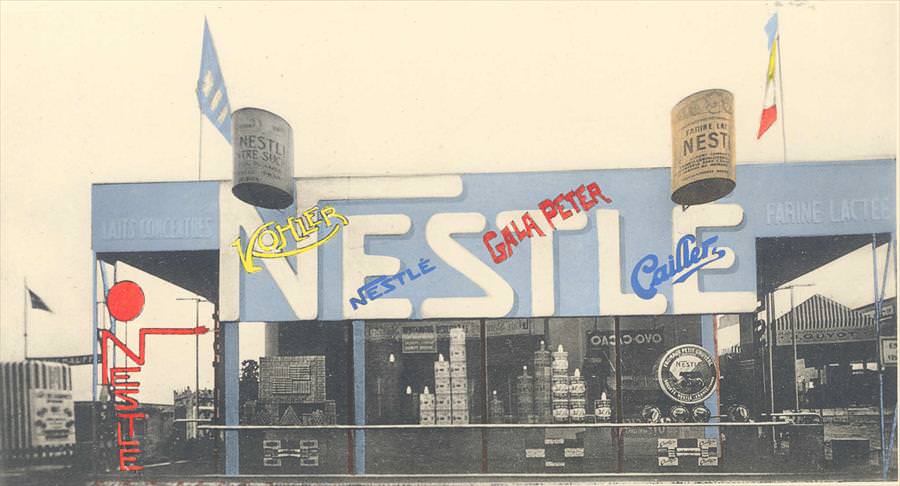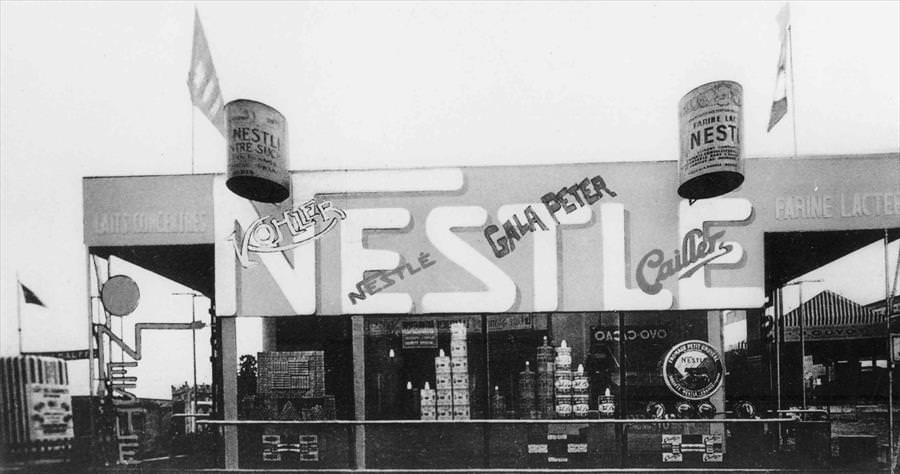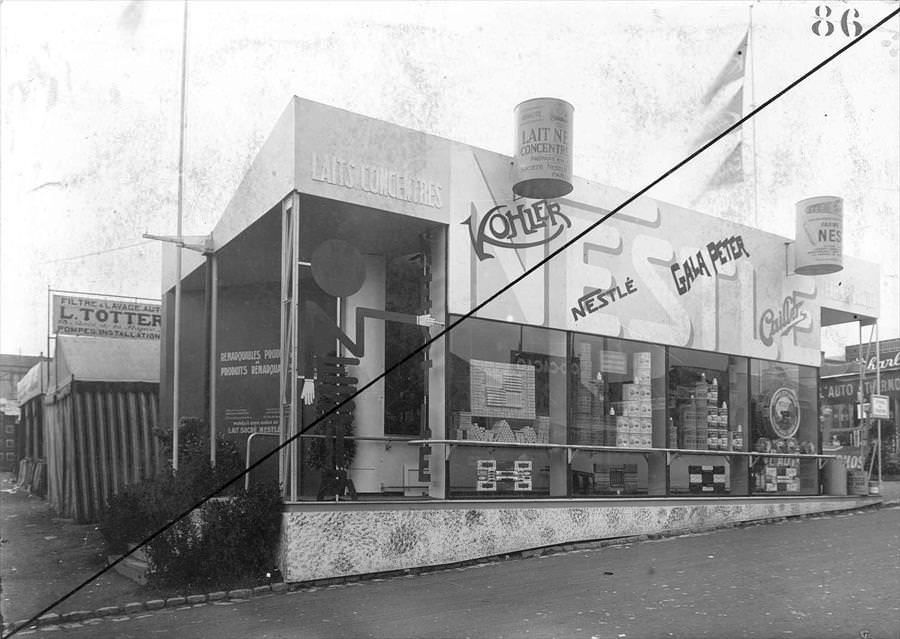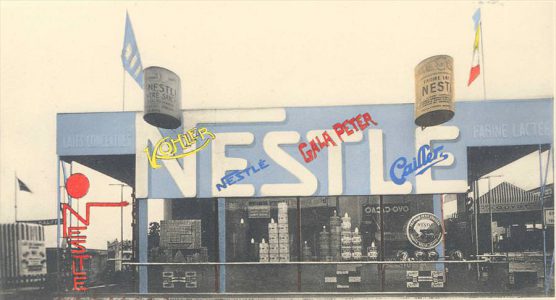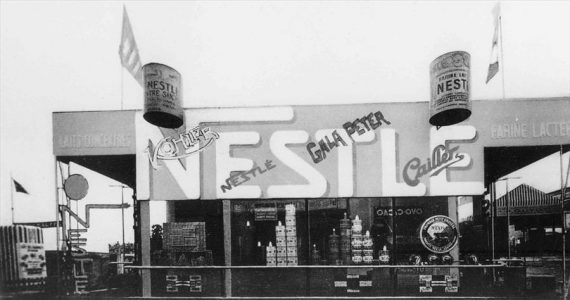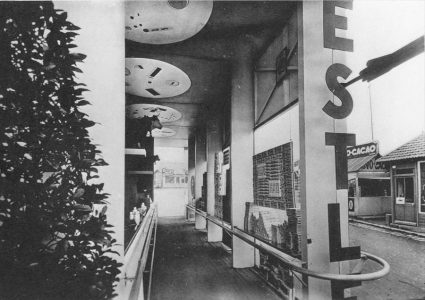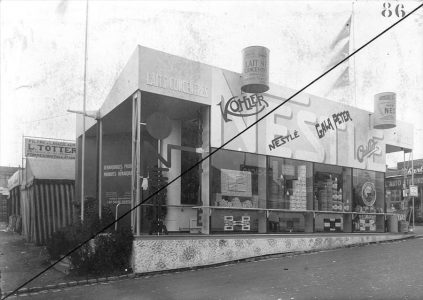Pavillon Nestlé
Paris, France, 1927
“We had great success with our Nestlé Vevey exhibition pavilion for French fairs.”
Commission
It was in December 1927, several years after the creation of the Pavillon de l’Esprit Nouveau and two years before that of the S.T.A.R Aviation Pavilion, that the Nestlé France Company commissioned Le Corbusier and his cousin Pierre Jeanneret to design an exhibition pavilion that could be dismantled and reassembled for use over a period of three years at fairs in Paris, Bordeaux and Marseille.
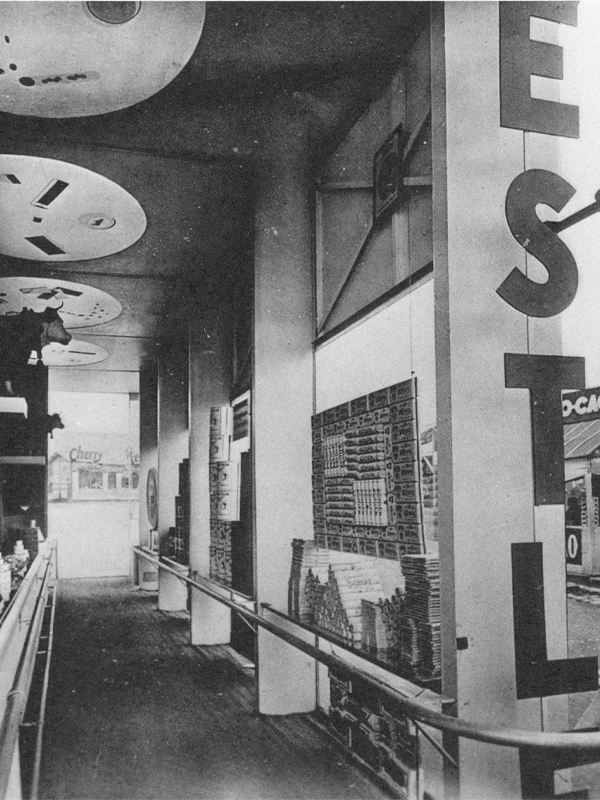
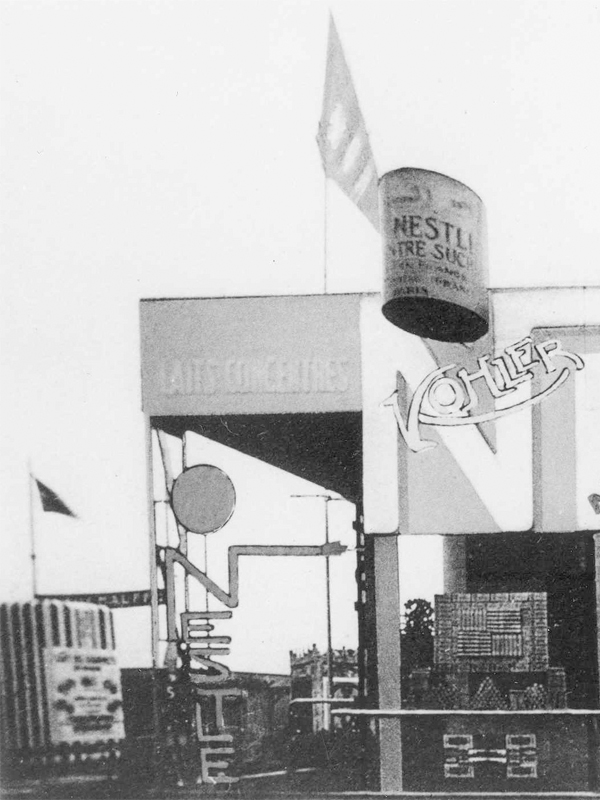
Project
To facilitate transport as well as assembly and dismantling, the facades of the pavilion are designed as a structure composed of fourteen porticoes connected by a set of beams, and to which are added a series of seven metal tubes positioned in the central axis of the building.
As planned, the pavilion thus encloses three parallel rectangular areas separated by transparent glass partitions as well as painted wooden slabs. It is 13.5 m long, 7 m wide and 5.25 m high (including 1.25 m of roof). The different areas segment and organize the circulation of visitors. The pavilion is slightly raised to compensate for unevenness in the terrain. It is accessed by a small staircase of six steps facing a corridor. It has a ramp running its full length, and is surrounded by open showcases displaying the company’s various products. On the other side of a glazed partition is an intermediate space fitted with a central shelf, on which is a machine used for wrapping bars of chocolate. The third space is a lounge for buyers. This is a comfortable reception area furnished with armchairs and showcases, as well as cupboards used to store all the products on show.
To help in choosing the decoration of the pavilion, the Nestlé company supplied the workshop at 35 rue de Sèvres with a variety of chocolates, including those of the Cailler, Peter and Köhler brands and these names can indeed be seen on the facade. For the building to embody the company’s image and identity as closely as possible, Le Corbusier and his cousin adopted its texts, drawings, logos and colours. Inside the pavilion there were also motifs relating to the brand’s industrial mythology (in particular cows, mountain pastures, etc.).
The double-sloped inverted roof with its central gutter is masked by a large blue metal sheet, giving the appearance of a giant package enclosing the window. Equidistant and projecting from the facade are replicas of two of Nestlé’s flagship products: the tin cans holding “Condensed Milk” and “Milk Powder”. These prime examples are also painted imposingly on the facade.
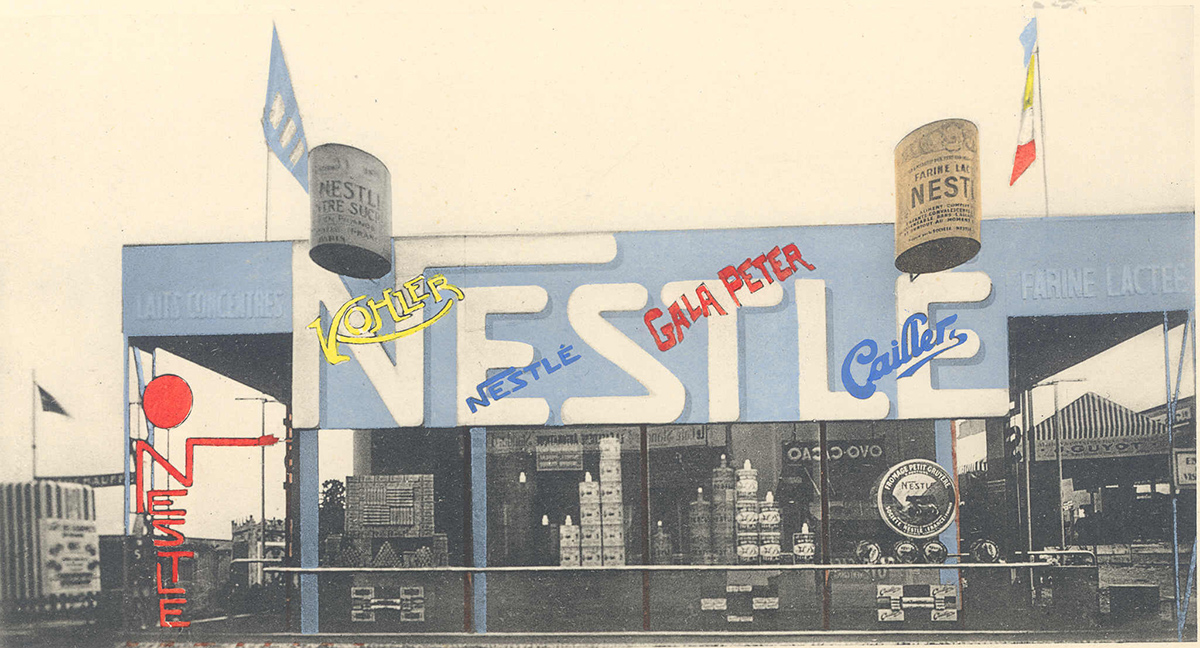
Subsequent History
Built in 1928, and planned to last for three years, the pavilion’s fate after 1930 remains unknown, but it was no doubt demolished.
